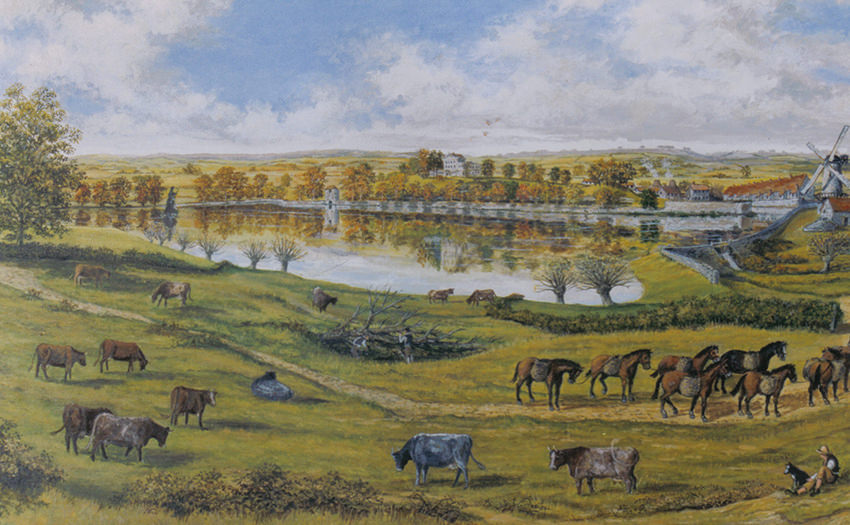
The Garden in Warmley, South Gloucestershire, was originally created by the 18th century industrialist William Champion. It is designated Grade II on the UK Parks & Gardens Register and is a Scheduled Ancient Monument, together with Champion’s brass mill, which houses Kingswood Heritage Museum, and the his original pin factory, known as the Clock Tower.
The Garden contains a number of historic 18th century features that are all listed Grade II: The Grotto, Statue of Neptune, Snail Viewing Mound, Boat House, Echo Pond, Summer House and Ice House. It also forms part of a Conservation Area together with the Brass Mill, Clock Tower and Champion’s Grade II* house, now a residential home.
The Conservation Area is currently (2019) on the Historic England At Risk Register and described as in a ‘very bad’ condition and ‘deteriorating’. Conservation and maintenance of the Garden has been impacted by Local Authority spending cuts over the last 10 years.
The Council carries out mowing and general garden maintenance, together with the occasional repair of the listed historic structures. The Grotto, however, has been largely conserved and restored by the Museum and the Friends of William Champions Garden who periodically open it to the public, at the same time encouraging visitors to explore the entire Garden site.
The Garden’s historic structures, including a number of stone walls, have been inundated by encroaching trees, shrubs and other vegetation. Saplings, including a number of holly trees, have taken root on the snail viewing mound, which already has a crown of established oak trees, presumably planted during the 19th century. The Grotto is similarly inundated, a large yew tree in particular growing on the roof. Other structures are covered with ivy and other climbing vegetation. In some cases tree roots are causing stonework to crack.
The undergrowth in the Echo Pond is cut back by the Council once or twice a year but remains full of unsightly weeds. Some of the repairs carried out by the now defunct Manpower Services used inappropriate materials, in particular concrete mortar, which is now failing and presenting safety issues.
The Garden remains largely unknown by the local and wider community. This is due both to the lack of any obvious entrance and its concealment on all sides by a large 1960s caravan park on the former 13 acre lake (stranding the 7 metre high Statue of Neptune which once stood on an island in the centre of the lake) and neglected undeveloped areas such as the former site of Champion’s Home Close and of his rank of 1740s workers’ housing (demolished 1960s).
The official entrance currently has two metal gates, one either side of the proposed development site for 5 static caravans (on the site of the easternmost section of the 18th century lake). These gates provide access for the Council to mow and carry out maintenance and for visitors to the Gardens on some Museum Open Days. Otherwise entry is via the neighbouring commercial premises through a hole in the fence, despite the Garden being a public Green Space.
Improving links between the windmill, icehouse, museum and gardens, along with increase public access to and awareness of the gardens and heritage assets are desired enhancement strategies proposed by South Gloucestershire Council to improve Warmley Conservation Area and registered garden (SGC 1997a; SGC 1997b). Should the suggested additional 2 footpaths be established, the development would have a beneficial impact on Warmley gardens, Warmley Conservation Area, the icehouse and windmill tower.
The green spaces in this community have been systematically lost to commercial enterprises and other developments. The once thriving village which lay beside the main Oxford to Bristol Turnpike Road (A420) is now impacted by the Bristol Ring Road and Longwell Green developments, and primarily used as a rat run rather than a destination.
Kingswood Heritage Museum, formed by volunteers during the 1980s, and the Friends of William Champions Garden founded in 2020, has ensured that the Gardens and Grotto are maintained and open to visitors, although they are owned by South Gloucestershire Council rather than the museum itself.
